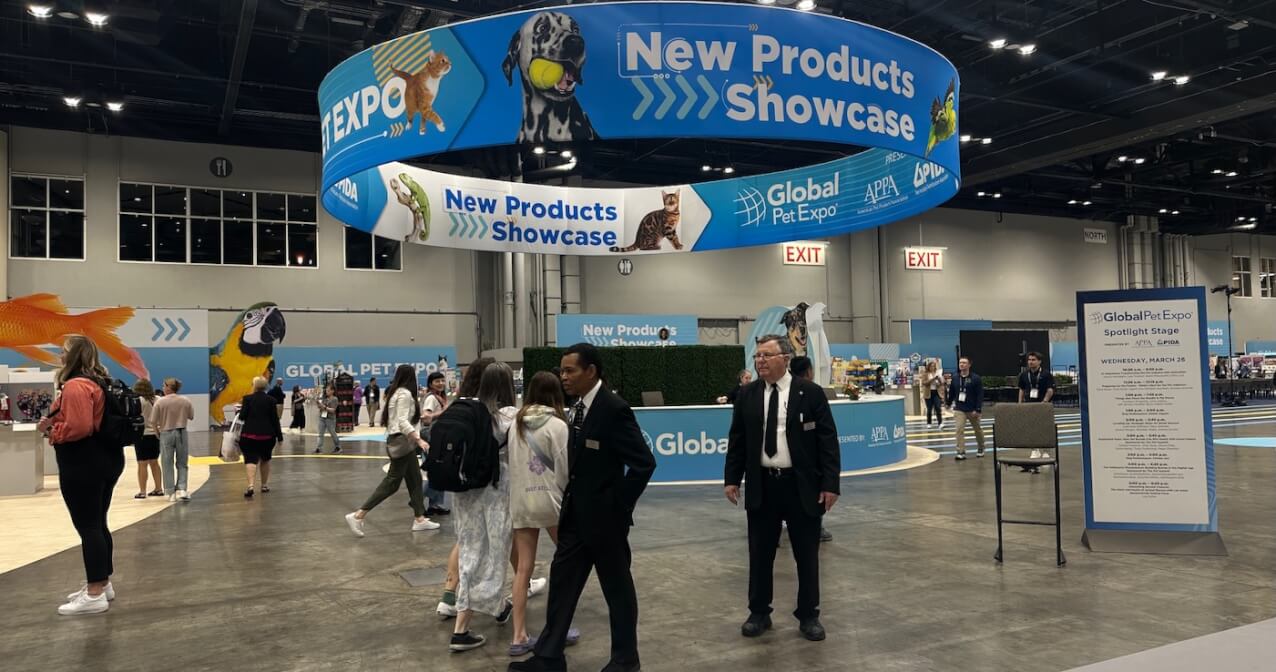On a past entry we talked about getting a new cat (Owning A Domestic Cat 101: Selecting A New Cat Or Kitten), and we also made an entire series on how to own a new puppy; but we never mentioned how to pick the perfect dog for you. That’s why we are here today to share our best tips for adopting a new puppy or dog.
When you are planning to adopt a dog, there are some very important points to keep in mind to make sure that you are delighted with your new dog. They can mean the difference between regretting your decision and having a wonderful new friend whom you will enjoy and cherish.
Adopting a new dog can be a great experience. Owning a dog can greatly enhance your life. When you do some research and apply common sense, you are taking the first step toward acquiring and enjoying a brand-new friend.
Mistakes To Avoid

One mistake to avoid is buying a dog on the spur of the moment. You may see a dog in a pet shop, or read an ad in the newspaper, and decide that you absolutely must have that dog. A hasty decision in purchasing a new dog is never a good idea. Instead, you should read through this book, learn all there is to know about the breed of dog you are thinking about, and decide if he will fit well into your life and your home.
A second mistake is to underestimate the cost of a new dog. Whether you choose an expensive purebred or a mixed breed, buying a dog is far from being the only cost involved. Your dog will need food and other supplies, and regular visits to the veterinarian. As you want your dog to always be in the fine condition as when you first bought him, you need to know that you can afford his upkeep.
Another factor in disappointment is trying to recreate a relationship you had with a dog in your childhood or youth. You may be tempted to think that all dogs of this particular breed are exactly the same. You can avoid disappointment by realizing that every dog is an individual, just like people. Your new dog’s personality and needs may be much different from the dog you had before, even if they are the same breed.
You will see how different a dog is from another once you train them, it won’t only teach you this, but it also help you connect with your little buddy on a different level of confidence and love: Puppy 101: A beautiful journey through dog training
You should also avoid getting a dog solely because a member of your family wants one. Regardless of which person is actually in charge of the dog’s daily upkeep and maintenance, when a dog lives with a family they are a part of the family. Only if you know that they will be welcomed by everyone should you purchase it and bring it home.
If you have never owned a dog before, your first dog can be a pleasure. It does mean, however, that you need to do your research well in advance of making your final decision. You must know what to expect, and that you are ready to become a dog owner.
What Breed Is Best Suited For You

When you think about comparing breeds of dogs, their size and appearance may be the first things to come to mind. There are many other factors involved in choosing the breed of dog that is right for you.
Comparing breeds involves considering your family’s needs as well as your prospective pet’s. For example, some breeds are generally good with small children while others are not. If there are children in your household, choosing a breed of dog which is known for gentleness and playfulness is wiser than choosing one that is tougher or aloof. It is much better to make a wise decision about a breed than to expect your new dog to conform to your household.
As breeds of dogs have their own personality traits and characteristics, you should choose the best match for yourself and your family. You may be thinking of a pet who will be a good guard dog, one that will be your companion, or one who loves to frolic and play. When you make note of your expectations, it will be easier to find the breed best matched to you.
Another important point to consider when comparing breeds are health issues. As many purebreds are much more susceptible to developing various types of health problems, knowing which issues pertain to the breed you are considering can help you to avoid heartache and costly veterinarian expenses. You should know what to expect from the particular breed before you make your final decision.
Some breeds require more upkeep than others. Whether it is a matter of frequent shedding, or bathing more regularly than others, you can narrow your choices down to the breeds which best match your ability to take care of a new dog. It is also a good idea to consider how much food and other supplies he will need on a regular basis. We have an extended talk about this last part in Healthy Dog: The Raw Dog Diet, Food Allergies And Vitamins
When you have taken all of these points into consideration, there is an additional factor which will also help you to choose the breed that is best for you: you want a dog that you will love, and enjoy spending time with for many years to come. You may have a particular breed in mind, or you may be waiting to find the right one. When you keep in mind that you and your new dog will establish a mutually-beneficial relationship, you will find the ideal breed of dog to invite into your life.
Consider A Mixed Breed

Whether you have your heart set on a particular breed of dog or are waiting to find one which seems appealing, there is another option for you to consider. A mixed breed may be exactly the kind of dog you want.
Contrary to common opinion, there is nothing substandard about mixed breed dogs. Not only do they make ideal pets, they are also quality animals. If you have not yet made up your mind about a specific breed, or are open to other possibilities, you might want to think about adopting a mixed breed dog.
There are some important benefits to mixed breeds. First, logically, a mixed breed dog will almost always be much less expensive than its purebred counterpart. If you want a delightful pet which does not break your budget, a mixed breed dog may be a good option for you.
Second, mixed breed dogs do not generally have the health complications often associated with many purebred dogs. If you choose a mixed breed, it is more likely that he will remain healthier, long into his older years.
There are a number of places where you can acquire a mixed breed dog. If you have not yet reached a decision about the kind of dog you want, you can also look around to see what is available. You can find advertisements for mixed breed dogs in nearly any newspaper, or you can visit your local animal shelter. Many people advertise dogs free-of-charge or at low prices when they are moving, or for other reasons. Animal shelters have a surplus of mixed breed dogs. Many animal shelters include spaying or neutering, deworming, and canine immunizations for dogs who are adopted.
The most important reason to get a mixed breed of dog: As people tend to prefer purebred dogs, there are large numbers of mixed breed dogs who need homes. When you consider adopting a mixed breed dog, you can give a wonderful dog a new home of his own. In return, your mixed breed pet will be the light of your life and a source of joy.
What To Expect

A successful adoption means being reasonable about your own expectations, and about what you can offer to your new pet. You will have the best results if you consider these expectations before you make your final decision about adopting a dog.
First, you should think about what you expect from the dog you want to adopt. The role he will play in your life is one factor. Are you looking for a dog who will guard your home and family, one who will be your buddy, or a dog who will get along well with your children and other pets in your home? When you have the answers to these kinds of questions, it will help you to decide on the dog that is best for you.
You also need to know the expectations you have regarding your new pet’s personality, temperament, and character. You may be looking for a dog who has a boisterous personality and is very active, or a dog who is calm and quiet. These factors also influence the kind of dog you should adopt.
As expectations are a two-way street, you also need to think about what you can offer to your new pet. You may have an abundance of free time to spend with your dog, or a busy schedule where the amount of time you can devote to your dog will be rather limited. Although all dogs need their owners’ time, some are more demanding than others. This includes play time, and time which you must put into your dog’s upkeep. The dog you choose should fit into your lifestyle without many adjustments on either his part or yours.
The lifestyle factor is relevant to your family, also. Which person will be taking care of the dog on a regular basis is one example. Whether he will be a family dog, or primarily one person’s special pet, the responsibilities for his care should be discussed and agreed upon before you adopt him. In some families, giving a new pet to a child is often seen as a good way for youngsters to learn about responsibility. However, whether your child is a toddler or a teen, it is probably unwise to give them full responsibility for this new pet.
Although developing a sense of responsibility, and developing a relationship with a dog can both be good experiences for children, too much emphasis on responsibility may lead to them resenting their dog and not taking proper care of it. It is important to be reasonable with how much you can expect from the child.
The best way to raise a puppy is with positive dog training. Develop a beautiful bond with your animal partner and learn how to build your relationship on confidence and love: Time for puppy preschool: Get the basics for positive dog training
Keep In Mind

If your family frequently takes family vacations, or if you often go away on business trips, these factors need to be considered. Whether you plan to take your dog with you on vacation, or must leave him behind when you travel, making decisions in advance about how he will fit into your lifestyle can save time, confusion, and even money, later on.
The financial obligations of a dog are important factors. Veterinarian bills, dog food, and other routine parts of dog maintenance should be thought through well in advance of adopting a dog. The upkeep and maintenance of some dogs is more costly than that of others. You must know that you can easily afford him. You would not want a high-maintenance dog if you are on a limited budget, nor would you want unforeseen expenses after you have adopted him and brought him home.
A successful adoption includes being reasonable about your expectations. You need to know what you expect from him, and what he can reasonably expect from you. When you put a little time into thinking about these factors before you adopt a dog, you will be more likely to be completely satisfied with the dog you choose.
If your new pet will be living with your entire family, devoting some time into discussing these subjects with your family will be beneficial to everyone concerned. It will reduce the chance of unforeseen surprises, and result in the adoption being a positive experience for your new pet and every member of your household. He will truly be a welcome addition to your family.
Networking With Others

You may not have thought of networking as being an important part of adopting a dog. There are a number of reasons why networking can make the adoption more successful. It can help you in choosing the right dog, and enhance the experience of being a dog owner.
Before you actually adopt a dog, you can learn a lot about the breed by networking with people who already own one. While there are many good ways to learn about dogs, nothing beats the first-hand experience of a dog owner. You can network with owners, either in person or online, and get very positive results. Most dog owners will love to share information with you, as well as personal stories about life with their pet. You can gain a wealth of valuable information and input from dog owners, and you may even make some new friends.
Networking is also good after you have adopted your new dog and taken him home. In many instances, the best place to get advice and the answers to questions is from people who have owned a dog for a long time. They can be the ideal source of information, as well as friendships based on your common interest.
No matter what kind of dog you are considering, it is likely that you can find online forums and clubs devoted to your particular breed of dog and their owners. In some regions, you may even be able to find clubs in person not far from where you live.
Whether you have already adopted a dog, or are still considering all of the possibilities, the firsthand information you receive by networking with other dog owners will be beyond compare. It should definitely be in your plans when you are adopting a new pet.
A concerned dog owner would want to be sure their pet is healthy, take a look at this: Dog food for puppies: Why is it so important to get the best food for dogs
Researching Your Breed

The more you know about the dog you adopt, the happier you will be about your decision. Getting the facts by researching the breed you have chosen is an essential step in being satisfied with your new pet. There are some key points which you should look for when you are researching a breed.
If you have decided to adopt a purebred dog, you may have much or little interest in his pedigree. However, even if you do not consider it to be an important factor, you should still gain all of the information. You can request a copy of the dog’s pedigree papers, which should include all of the details about his parentage and bloodline. As many breeders of purebred dogs own the parents of the puppies they have for sale, visiting your new dog’s parents can be a positive experience.
It is a good idea to be wary of breeders or individual dog owners who state that their dog is a purebred but do not have papers as proof of this. While they may be completely honest, the possibility that they are not is something to keep in mind before you agree to adopt the dog.
When you are researching the breed you have chosen, the main points are to help you in deciding if this is the right breed for you, and what to expect from owning your new pet. You can research on the internet, by talking to owners and breeders, and by visiting the section about dogs in your local library.
You Dog’s Breed History

Learning about the history of your breed can be an enlightening experience. Whether you have interest in such factors as where the breed originated or not, there is valuable information to be found in the breed’s history. One example is the breed that has been bred for a specific purpose. Not only will you find this interesting, it will also help you to understand your dog’s temperament, attitude, and personality.
What can you find in the history of a breed? The facts you come up with may be astounding! The dog you adopt may be the descendant of dogs owned by royalty, dogs which were primarily used as work animals, or dogs which were chosen as guardians of their masters. The more you know about where your breed came from, the more you will understand how the pet you choose fits into your life today.
Researching a breed includes learning about the standards for this particular breed. Even if you are thinking no further than gaining a good companion, you may want the very best example of your breed. A little research will provide information on the factors which constitute top standards in color and markings, size, body tone, and other physical characteristics. The highest quality dog will meet these standards.
As you have already read in brief, purebred dogs can come with a variety of health issues. Before you adopt a purebred, researching the health issues commonly associated with your breed can help you to decide if you want to take this risk, and to be prepared in advance. You need to know whether your breed is prone to developing health conditions from bone problems to cancer, and how you will deal with such conditions if they do occur.
You want the experience of owning a dog to be positive for both yourself and your new pet. When you do a little research ahead of time, the experience can be a good one indeed! You can gain a better understanding of your dog before he becomes a part of your family. When you have all of this important knowledge in advance, you can focus on enjoying many years together with your new pet.
Depending on your dog’s breed, they will be easier or harder to train. You might want to take a look at this too: Time for puppy preschool Part 2: Training Your New Puppy
Getting To Know Your Dog

No matter how much time you put into learning about the breed you have chosen, there is an additional point which you should consider: while there are many factors common to a particular breed, each dog is still an individual. You can gain a fair amount of understanding of what the breed is like, but getting to know your own dog means going a little further.
The best way to get to know your dog is with in-person visits before you make your final decision to adopt him. If the breeder you have chosen lives fairly close to you, or if you are able to travel, the time you put into this will be invaluable. When you can meet, visit, and spend time with a dog, you will be able to determine if he is the right “fit” for you.
Spending just a small amount of time in your dog’s company will help you to see what his personality and behavior are like. You may find that you both are a good match immediately, that you grow to adore each other, or that there are clashes which prod you to decide that this is not the right dog for you. If you have the opportunity to do so, meeting and spending time with the dog before you adopt will be very beneficial to you both.
Please feel encouraged to say hello – we’ll be happy to help with any questions you might have, and if you’d like to comment on our site, products or service, we’d love to hear from you!










 “The innovation showcased at this year’s Global Pet Expo reflects the dynamic growth and resilience of the pet industry,” said APPA President and CEO Pete Scott. “With pet ownership reaching 94 million U.S. households and continuing to expand, it’s clear that pet care remains a top priority for consumers. These award-winning products highlight the creativity and commitment of brands that are not only meeting the evolving needs of pet owners but also strengthening the deep bond between people and their pets.”
“The innovation showcased at this year’s Global Pet Expo reflects the dynamic growth and resilience of the pet industry,” said APPA President and CEO Pete Scott. “With pet ownership reaching 94 million U.S. households and continuing to expand, it’s clear that pet care remains a top priority for consumers. These award-winning products highlight the creativity and commitment of brands that are not only meeting the evolving needs of pet owners but also strengthening the deep bond between people and their pets.”